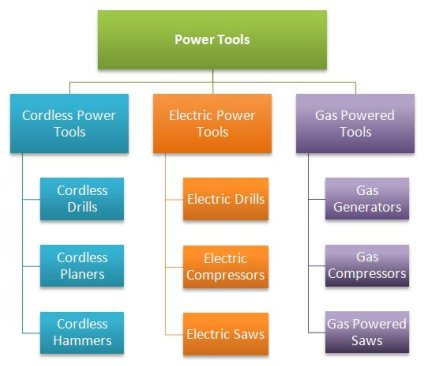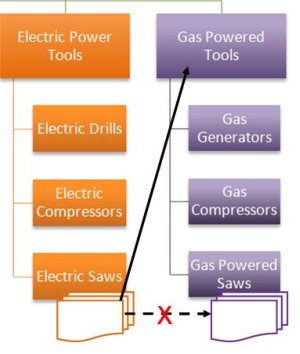5 Times When SEO Siloing Can Make or Break Your Search Engine Rankings

If you were to compare your website to a TV show, would it be like “Hoarders”?
It’s more common than you may think for websites to have hundreds — even thousands — of pages of content without much structure. All of them may be connected but in a disorganized way. After a while, chaos sets in.
This creates a bad experience for users and a difficult environment for search engines to understand what you are about. Your “clear hierarchy” looks more like a bowl of spaghetti. And that can result in missed opportunities to rank.
Luckily, there is a way to organize your website. SEO siloing is an SEO strategy that organizes website content by grouping related webpages together into hierarchical categories. These categories support target keywords (search terms) and elevate the expertise of a website.
We always recommend siloing as a best practice because we know it works. But I understand that it may not always be feasible. There are some situations, though, when you should always SEO silo your content for the best results.
Make a site with a clear hierarchy aligned by words users would type and with pages containing a reasonable number of text links that point to the important parts of your site.
–Summary, Google Webmaster Guidelines
- What is SEO siloing?
- When you want to target “money words”
- SEO silo when you cannot break into page 1
- When you have lots of unrelated content
- SEO silo when you have way too many links on every page
- SEO silo when rankings have hit a wall and you need a final push
- FAQ: How can I implement SEO siloing to enhance my website’s relevance?
What Is SEO Siloing?
SEO siloing is a way to organize your website content based on the way people search for your site’s topics. Its goal is to make a site relevant for a search query so that it has a better chance of ranking.
Say you own a power tools website. On it, you sell cordless power tools, electric power tools, and gas-powered tools.
A proper siloing strategy would organize your website content (and navigation) into categories that support the products you sell, based on how people search. (Consequently, those are the keywords you are targeting as well.)
See the illustration below as a visual. Each type of power tool category would have a landing page. Underneath each landing page would be a subpage for each tool type within that category. Links between landing pages and their own subpages, but not with subpages in other categories, clarify the relationships for search engine spiders crawling your website.

That’s it! Of course, that’s a highly simplified overview of this SEO strategy. And you can learn more by viewing our SEO siloing guide.
Now let’s look at five scenarios when siloing is critical.
Situation 1: When You Want to Target “Money” Words
If you want to target any search queries that would lead to a sale, you need to silo your site to show lots of support for that money keyword.
Siloing supports your target keywords by providing a library of information that is well organized from the landing pages to their subpages, and vice versa.
The results:
- PageRank flows to your “money” pages (the landing pages with the main target keywords).
- Website relevancy, expertise and authority for desired search terms increases.
- Content is organized so search engines can crawl and understand it.
- People can find the info they need and have a good user experience.
All of those factors help a site to rank better in the search engine results pages for target keywords.
And, of course, this all ties into Google’s view on “Your Money or Your Life” (YMYL) types of content. YMYL topics are discussed in Google’s Search Quality Evaluator Guidelines (SQEG) as those topics that “could potentially impact a person’s future happiness, health, financial stability, or safety.”
Because you are targeting queries that will potentially result in a purchase of goods or services, especially for purchases that can be made online, you want to be sure your website demonstrates experience, expertise, authoritativeness, and trustworthiness (E-E-A-T).
For YMYL pages, E-E-A-T is a critical factor in Google’s evaluation of your website. Luckily, siloing is a great way to demonstrate E-E-A-T.
Learn more with the Complete Guide to the Fundamentals of Google’s E-E-A-T.
Situation 2: SEO Silo When You Cannot Break Into Page 1
A clear website hierarchy has always influenced search engine rankings. A major factor is the ability of a website to offer the “whole” answer for searchers.
Not only should a webpage be a complete answer to a search query, but also it should be a part of a website that provides more easy-to-find information related to that topic.
Essentially, you want a person to be able to find the information they need or complete an action with ease. Siloing does that.
Google has always recommended an organized website. Two quotes from its SEO Starter Guide come to mind.
Quote 1: Google’s advice about how to structure a site:
Make it as easy as possible for users to go from general content to the more specific content they want on your site. Add navigation pages when it makes sense and effectively work these into your internal link structure. Make sure all of the pages on your site are reachable through links, and that they don’t require an internal “search” functionality to be found. Link to related pages, where appropriate, to allow users to discover similar content.
Quote 2: Google says it looks at the whole website to determine if it’s relevant for a single query:
The navigation of a website is important in helping visitors quickly find the content they want. It can also help search engines understand what content the webmaster thinks is important. Although Google’s search results are provided at a page level, Google also likes to have a sense of what role a page plays in the bigger picture of the site.
See this case study on how siloing helped a website go from no rankings to Page 1.
Situation 3: When You Have Lots of Unrelated Content
If you own a website with hundreds or thousands of disorganized webpages, you’re not going to achieve the “relevance” you need to rank. Remember: organizing content helps your site to be a relevant authority on a topic.
Unrelated content can come in different forms. You might have a website that talks about too many things at once. Or you have not honed in on your main theme. This is confusing to Google (and visitors). If you talk about everything all at once you appear to not be about anything.
Another form of unrelated content is having a bunch of webpages that aren’t connected in any meaningful way. In other words, no categories, no internal links, and no organization whatsoever.
In both instances, Google is not going to be able to easily make the connection itself on what your site is about. A search engine can only decipher meaning when the subjects are clear and distinct.
Situation 4: SEO Silo When You Have Way Too Many Links on Every Page
Google discovers new webpages by following links. And, search engines consider links within a website to be a strong signal of subject relevance.
So if Page A links not just to Page B (another relevant topic) but also to Page C, Page D, and all the way down to Page Z, you are seriously diluting PageRank and relevance. Siloing helps to focus your links so that you link only like topics together, and do it strategically.
Link to related pages, where appropriate, to allow users to discover similar content.
–Google, Search Engine Optimization (SEO) Starter Guide
Siloing helps to focus your links so that you link only like topics together, and do it strategically.
When you link two pages together with a link, it creates relevance between those two pages and also directs visitors to a relevant page.
Random links between silos weaken the theme. No subpage within a silo should link to a subpage in another silo. The following diagram shows appropriate and inappropriate internal linking for a siloed website.

Situation 5: SEO Silo When Rankings Have Hit a Wall and You Need a Final Push
Oftentimes, restructuring your site is the missing link to push your rankings further up on the search results page.
So much of what makes a quality website is content and user experience (I call this post-click SEO). Organized content that provides the “whole” answer to visitors creates a good experience and elevates the website’s expertise.
This, in turn, keeps your visitors on your site longer. And, when a person doesn’t bounce back to the search results to find another answer, that is a signal to Google that the content is relevant.
And with Google’s RankBrain AI at work, this type of engagement could be a factor in how your site ranks in the future. In other words, if you get a lot of people bouncing back to the search results to look for another answer, Google will likely take note.
Learn more about RankBrain with The Real Impact of RankBrain on Web Traffic.
Closing Thoughts
SEO siloing is not all there is to ranking. But without it, the on-page relevancy battle is lost. Having an organized website is not only good for Google and your visitors but also good for your rankings, traffic, and business.
Fixing your website’s silo strategy is one of our specialties. For a free quote, please contact us today.
FAQ: How can I implement SEO siloing to enhance my website’s relevance?
Staying ahead of the curve is crucial for maintaining and enhancing your website’s online presence. One powerful technique to achieve this is SEO siloing. This method involves structuring your website’s content to create a hierarchical and organized framework that not only improves user experience but also enhances your site’s relevance in search engine results.
Understanding SEO Siloing
SEO siloing is the process of categorizing your website’s content into distinct, tightly themed sections or silos. Each silo focuses on a specific topic or keyword phrase, creating a clear and logical hierarchy. By doing so, you help search engines understand the relevance of each section, making it easier for them to index and rank your pages accurately.
Step 1: Keyword Research
Begin by conducting thorough keyword research to identify the primary and secondary keywords related to your niche. These keywords will form the basis for your silos.
Step 2: Content Audit
Evaluate your existing content and determine which pieces can be grouped into relevant silos. Revise or create new content as needed to fill any gaps.
Step 3: Create Silo Structures
Organize your content into silos, with each silo centering around a primary keyword or theme. Ensure that the content within each silo is closely related and supports the main topic.
Step 4: Internal Linking
Establish a strong internal linking structure between pages within the same silo. This helps search engines navigate your site and understand the content hierarchy.
Step 5: Optimize On-Page Elements
Optimize on-page elements, including titles, meta descriptions, and headers, to align with the keywords of each silo.
Step 6: Monitor and Adjust
Track and adjust any necessary modifications on a regular basis. Keep your content fresh by updating and expanding it as required.
Implementing SEO siloing may take some time and effort, but the benefits are well worth your efforts. Search engines will become more relevant if your website features keyword-focused pages with an organized structure; furthermore, improving user experience and driving more organic traffic will all add up to an increase in relevance for search engines.

12 Replies to “5 Times When SEO Siloing Can Make or Break Your Search Engine Rankings”
Excellent and practical knowledge. In addition, I believe your website’s layout and design are excellent.
Excellent and helpful information. All in all, excellent thoughts, and I love reading your website’s blog posts.
The information you provide on your site has been really beneficial to me as I recently built a website. I value the time and effort you put in.
hi there i am also working as a seo expert on a different websites now a days google introduce new board algorithm update. can you write details on it on another article.
seo is the most amazing factor in internet marketing we get more high traffic on our website.
By “siloing” your website (aka creating content groupings and internal link structures) you can drastically improve how search engine bots interact with your site and helps in finding organic traffic.
What design method would you recommend or implement to apply siloing to the WordPress menu system. Is there a good plug-in that you could recommend?
Hi James: As yet, I don’t know of a plugin that can do siloing. You need to do research on how people search and apply that to your website content organization and navigation. For large sites, we may spend 30 to 40 hours on a siloing project to really nail the website structure and lay out the changes needed to get maximum results.
Siloing has made a huge difference to my site also, allowing to rank for groups of keywords. Extremely helpful and I feel more certain in finding organic traffic.
Sometimes we want to put everything in one page (brutally :D), but we forgot about siloing and the structure. Thank you for reminding me about this Bruce, i hope people in Simi Valley doing all right, stay safe, Regards.
LEAVE A REPLY









